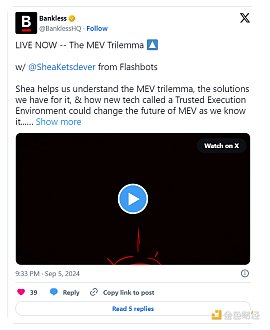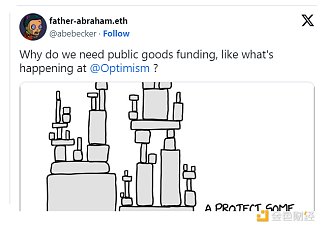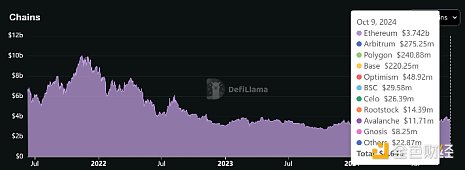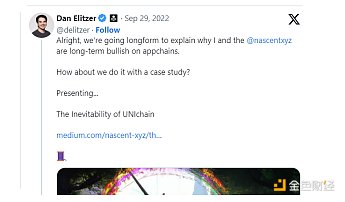Author: jack inabinet, Bankless senior analyst; Translation: Golden Finance xiaozou
Unichain may soon become a cryptocurrency currency The liquidity of the liquidity is based on OP Stack, which will be switched by the highly anticipated UNI cost through pledge function. At the same time, it can also reduce trading waiting time and solve the fragmented challenges brought by Rollow-centered roadmap. "> This is the founder of Uniswap founder Hayden Adams and Optimism contributors Karl Floersch told Bankles about the next development of Uniswap and their hopes to realize the vision proposed by Ethereum.
Ceductors have been guessing what role can the specific application L2 play in the Ethereum expansion war in Ethereum for a long time. What kind of role can play without damage to decentralization characteristics. With the launch of Unichain, the timing of testing universal applications in an isolated execution environment has finally arrived.
In this article, we will explore Uniswap's major leap and what impact it has on the future of DeFi.
1、UnichainIntroduction
Uniswap is the mainstay of Ethereum DeFi applications, and Unichain is the latest version of this important token exchange protocol. The goal of Uniswap developers is to replicate the seamless user experience of monolithic blockchains and create a veritable liquidity center in the crypto space.
Like Optimism and Base, Unichain will be a permissionless EVM-compatible general rollup, building Uniswap deployments on the OP Stack.
While the freshly-launched Unichain testnet is a low-profile proof of concept, with plans to launch the mainnet later this year, the network intends to utilize a trusted execution environment (TEE) secured by UNI validators who provide fast pre-confirmations and earn network fees for their services, while reducing user transaction wait times by four times, from 1 second to 200-250 milliseconds, and supporting the long-awaited UNI fee switching feature!

While Ethereum’s decentralization-first design philosophy is indeed laudable, it is undeniable that offloading execution tasks to L2 complicates the user experience by allowing assets and protocols to be dispersed across isolated blockchains. Ethereum must address the fragmentation issues brought about by its rollup-centric roadmap to support L2 interoperability if it wants to achieve mass adoption.
The efforts to revolutionize L2 interoperability go far beyond the scope of Unichain construction and require the adoption of new Ethereum-wide interoperability standards, such as unified cross-chain transaction execution EIPs and interface improvements in wallet chain switching and asset balance display.
Swaps from alternative networks supported by Unichain still require time-consuming bridge transactions, but the proposed OP Stack native interoperability promises to reduce bridge wait times and transaction costs within the OP Stack.
2、SuperchainAdvantages
Since Unichain adopts the OP Stack standard, any "Superchain" rollup built on this framework can easily implement the above technical improvements, bringing positive impacts to the broader OP ecosystem by reducing transition wait times and enabling functional native token staking functions.
Interoperability between rollups under shared standards is easiest to achieve, and while Ethereum’s array of competing rollup frameworks has led to the technical heterogeneity of rollups today, the potential synergies created by developing on the most popular stack naturally promote a winner-takes-all situation.
Once advanced rollup features such as shared ordering and native interoperability become available, the advantages of building within a unified stack will be very clear, meaning that any L2 deployer looking to leverage their own L2 liquidity center must consider Uniswap’s decision to build on the OP Stack during the rollup stack selection process.
Since many OP Stack chains invest a percentage of sorter revenue into the Ecosystem Traceability Public Welfare Fund (RPGF) project, increased ecosystem activity will translate into more funds that can be used to create and promote standards consistent with Optimism.

If Unichain's ambition to become a cryptocurrency liquidity center can be truly realized, then this experiment will make Optimism OP Stack the ace rollup framework, while clearly proving the rationality of Ethereum's rollup-centric roadmap.
3Impact on the future of DeFi
Imagine that Unichain becomes the liquidity center of Ethereum, and free market dynamics will determine that most on-chain exchanges are automatically sent through the network, because its deep liquidity will reduce slippage and bring the best transaction execution.
Assuming Unichain can replicate the success of the Uniswap exchange at the network level, the chain will also become a home for high-performance DeFi applications, and high-level players like institutional market makers can benefit greatly from the shortest transaction waiting time and the best execution price.
Nevertheless, even with OP Stack native interoperability, trading on the unified crypto network has always been faster and cheaper, which means that Unichain must have the deepest liquidity and the best execution price for a given trading pair to be considered an exchange solution.

Despite L2 processing 22 times more transactions than Ethereum, we found during analysis that up to 80% of Uniswap’s TVL is still stored in its Ethereum smart contracts. Although Uniswap is free to deploy Unichain, this does not mean that liquidity providers will also migrate.
The Uniswap application chain has been rumored for a long time, and many people in the Ethereum community have expressed deep doubts about the feasibility of this model. Now that Uniswap’s grand vision for Unichain has been made public, we will soon see who is right.

 Kikyo
Kikyo







